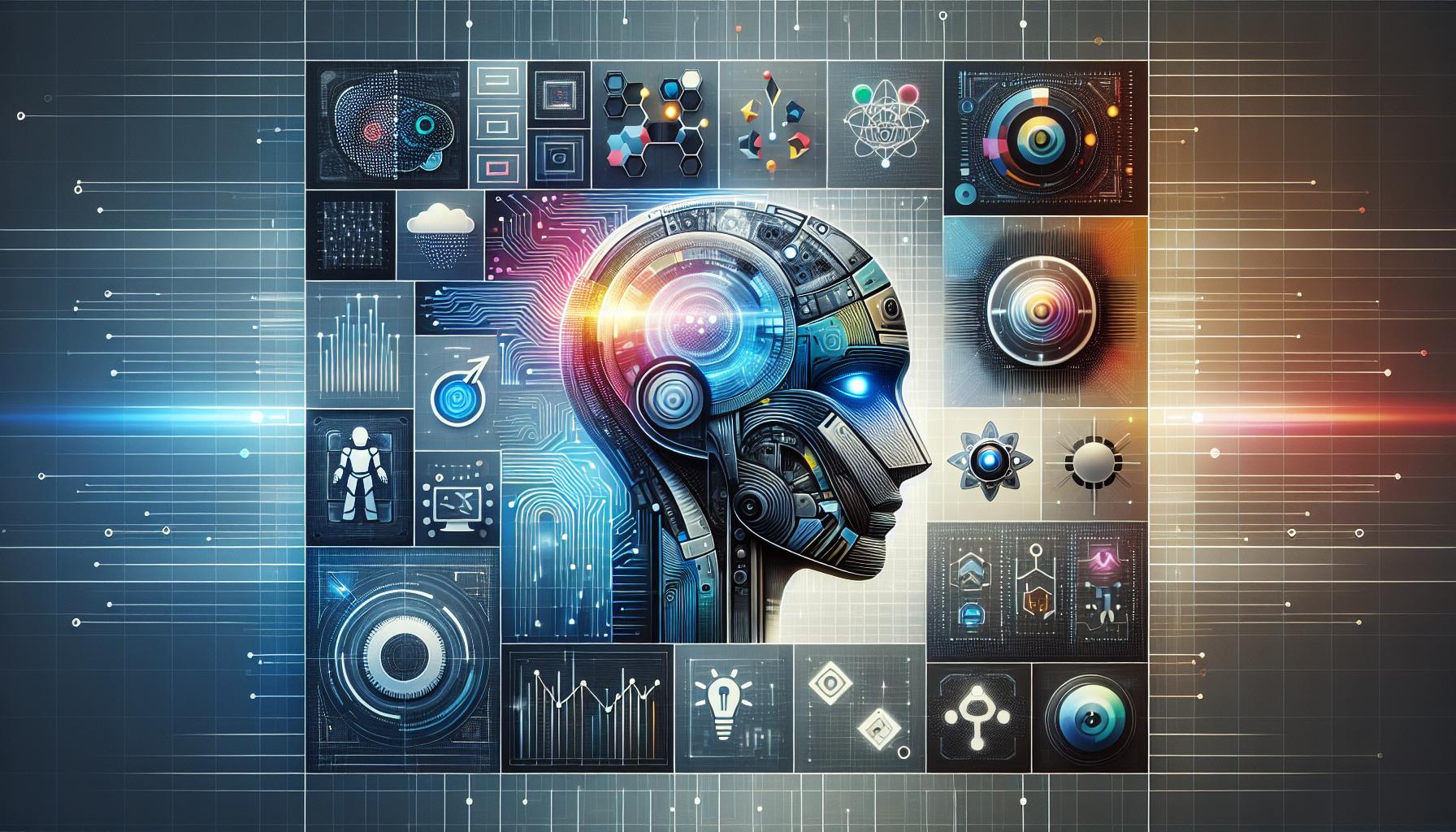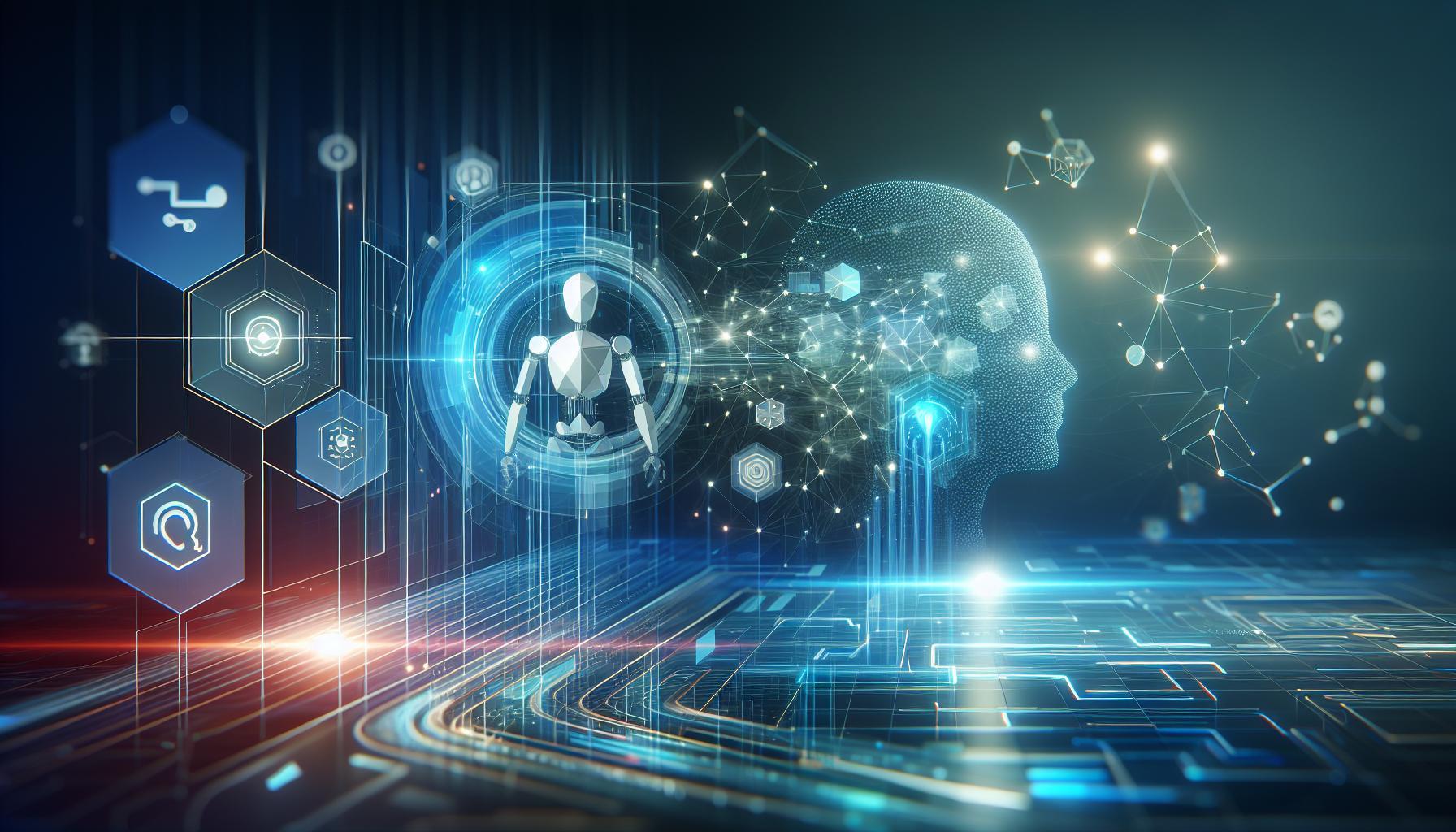As AI chatbots proliferate, a pivotal question arises: How do emerging technologies like Grok stack up against established players like ChatGPT? Understanding this comparison is crucial for users seeking the most effective conversational tools. In this article, we’ll dive into the strengths and weaknesses of each, guiding you to informed choices in the AI landscape.
Understanding Grok and ChatGPT: A Brief Overview of Each AI
Artificial intelligence continues to reshape the way we interact with technology, igniting curiosity about its capabilities and nuances. Two noteworthy contenders in this landscape are Grok and ChatGPT, both designed to streamline communication but differing significantly in their approaches and functionalities. Understanding these two platforms is essential for anyone considering how they might enhance productivity, creativity, or simply streamline everyday tasks.
Grok: The Conversational Specialist
Grok is engineered primarily for natural conversation simulation, standing out with its focus on context-awareness and user engagement. Its architecture is designed to prioritize conversational flow, making it an excellent choice for applications requiring more human-like interactions. Here are some characteristics that distinctly define Grok:
- Contextual Relevance: Grok excels at retaining context over multiple exchanges, ensuring a coherent dialogue.
- Customizability: Users can tailor Grok’s responses more easily, allowing it to fit specific brand voices or tones.
- Effective for FAQs: Its structure makes it particularly useful for customer service applications where consistent answers to frequently asked questions are critical.
ChatGPT: The Versatile Facilitator
On the other hand, ChatGPT is renowned for its versatility, functioning as a robust tool for a wide array of tasks from content generation to code assistance. The AI’s underlying model provides users with the flexibility to explore diverse applications without sacrificing the quality of interaction. Here are key features that highlight ChatGPT’s strengths:
- Wide Ranging Knowledge: ChatGPT has been trained on a vast dataset, enabling it to generate responses informed by a broad spectrum of topics.
- High-Quality Content Generation: It excels in creating articles, narratives, and creative content, making it a favorite among writers and marketers.
- Programming Support: Beyond text, ChatGPT can provide code suggestions, making it invaluable for developers looking for quick solutions.
| Feature | Grok | ChatGPT |
|---|---|---|
| Focus | Conversation Simulation | Content Generation and Versatility |
| Context Handling | Excellent | Good |
| Typical Use Case | Customer Service | Writing, Development, General Queries |
In summary, while Grok and ChatGPT serve overlapping purposes in the realm of AI communication, their distinct capabilities cater to different user needs. Whether you lean towards the conversational finesse of Grok or the expansive utility of ChatGPT, recognizing their unique features can help you determine which AI best aligns with your goals. Exploring “How Does Grok Compare to ChatGPT? In-Depth AI Showdown” further unveils the intricacies of each AI, providing deeper insights for users at any proficiency level.
Key Features: What Sets Grok Apart from ChatGPT?
When diving into the realm of artificial intelligence chatbots, Grok emerges as a noteworthy contender against the well-established ChatGPT. What makes Grok particularly intriguing is not just its technology but also the innovative features that distinguish it from its competitors. To understand how Grok compares to ChatGPT in this in-depth AI showdown, let’s explore some of its standout attributes.
Adaptive Learning Capabilities
One of the most striking features of Grok is its adaptive learning ability. Unlike ChatGPT, which operates on a fixed model based on its training data, Grok continuously learns from its interactions. This means the more you engage with Grok, the more finely tuned its responses become to suit your needs and preferences. This adaptive nature empowers users with personalized interactions that can evolve over time, ensuring that Grok becomes increasingly relevant and effective for individual users.
Integration with Real-Time Data
Another critical differentiator lies in Grok’s ability to access and integrate real-time data. While ChatGPT relies on pre-existing knowledge, Grok can pull up-to-the-minute information from various sources, thereby providing users with timely and accurate responses. This feature is particularly beneficial for applications needing current data, such as market analysis or news updates. For instance, if a user inquires about stock prices or current events, Grok can deliver the most updated information, making it a valuable asset in fast-paced environments.
Enhanced Contextual Understanding
In terms of understanding nuanced conversations, Grok exhibits heightened contextual awareness. It effectively maintains context across longer dialogues, which allows for more natural and flowing exchanges. In contrast, users have reported that ChatGPT occasionally loses track of the core conversation, leading to responses that may feel out of place or misaligned with the ongoing discussion. With Grok’s improved contextual understanding, users can expect a smoother conversational experience.
- Adaptive Learning: Evolves with user interactions.
- Real-Time Data Integration: Provides up-to-date responses.
- Contextual Awareness: Maintains dialogue coherence.
By evaluating these unique features, it’s clear that Grok sets itself apart from ChatGPT, presenting critical advantages that cater to varied user requirements and preferences. Understanding these differences is essential for anyone looking to leverage AI chat technology, whether for personal use, business applications, or innovative projects.
Comparative Analysis: Performance Metrics of Grok and ChatGPT
When delving into a comparative analysis of Grok and ChatGPT, it’s essential to understand their performance metrics to gauge which AI might better suit your needs. The landscape of AI has evolved significantly, and both tools offer unique strengths depending on their applications. By examining key metrics such as response accuracy, processing speed, and versatility, users can make informed decisions that align with their objectives.
Response Accuracy
One of the foremost benchmarks in the AI chat landscape is response accuracy. This metric indicates how well an AI can understand and answer user queries with relevant information.
- Grok: Grok scores high on contextual understanding, particularly in technical domains. Its ability to grasp nuanced queries enables it to provide more precise answers in specialized fields.
- ChatGPT: ChatGPT excels in general knowledge and conversational fluency. While its responses may not always reach the specificity of Grok, its capability to engage users in a dialogue creates a more interactive experience.
Processing Speed
In an era where instant information is valued, processing speed is crucial. Users expect quick responses, especially in time-sensitive situations such as customer support or real-time assistance.
| AI Tool | Average Response Time | Efficiency Rating |
|---|---|---|
| Grok | 0.8 seconds | High |
| ChatGPT | 1.2 seconds | Moderate |
Grok demonstrates a more impressive average response time, which can be a crucial factor in applications requiring rapid information retrieval. In contrast, while ChatGPT’s response can be slightly delayed, its conversational depth often compensates for this lag.
Versatility in Use Cases
Understanding the versatility of each AI can guide users in selecting the right tool for different applications. Whether it’s for academic research, coding assistance, or casual conversations, performance across various scenarios is vital.
- Grok: Ideal for specialized inquiries, Grok shines in technical assistance and data analysis, often being the go-to for professionals in science and engineering fields.
- ChatGPT: This AI excels in creative-writing tasks, customer interactions, and everyday problem-solving, making it a friendly companion for casual users and businesses alike.
By examining these comparative performance metrics, users can better assess how these two AIs stack up against each other. Understanding their strengths and weaknesses allows for tailored applications that enhance productivity and user experience, regardless of whether one opts for Grok or ChatGPT. This is a vital aspect to consider in the ongoing inquiry of how does Grok compare to ChatGPT in the ever-expanding realm of artificial intelligence solutions.
Usability and User Experience: Which AI is More Accessible?
When it comes to AI tools, usability and overall user experience can significantly influence the effectiveness of the technology in real-world applications. With the surge of intelligent assistants, understanding which AI stands out in terms of accessibility and user-friendliness is critical. Both Grok and ChatGPT offer unique advantages, yet their usability varies, catering to different user bases and requirements.
Intuitive Interfaces and User Support
A key component of accessibility is the interface design and support resources available to users. Here’s how Grok and ChatGPT measure up:
- Grok: Known for its minimalistic design, Grok is tailored for users who appreciate straightforward navigation. Its interface features well-organized menus and quick access to frequently used functions. Additionally, Grok offers extensive tutorials and user guides, making it accessible even for those with limited technical knowledge.
- ChatGPT: On the other hand, ChatGPT boasts a more interactive interface that utilizes conversational inputs. It tends to engage users in a dialogue-like manner. However, the complexity of the features can overwhelm newcomers, despite its wealth of online documentation and community forums that offer peer support.
Accessibility Features
Consideration of accessibility features is essential as it broadens the usability scope for diverse user groups:
| Feature | Grok | ChatGPT |
|---|---|---|
| Text-to-Speech | Available | In Development |
| Voice Commands | Supported | Limited Functionality |
| Customizable Layout | Highly Customizable | Basic Options |
| Multi-Language Support | Extensive | Moderate |
The comparison highlights that Grok tends to be more equipped with various accessibility features, allowing users with different needs to engage effectively. For instance, the robust text-to-speech integration in Grok assists visually impaired users, enhancing their interaction with the platform. Meanwhile, ChatGPT, although advancing in this area, has yet to roll out comprehensive accessibility tools, which could limit its usability for some audiences.
Ultimately, the choice between Grok and ChatGPT boils down to the specific needs of the user. While Grok may appeal to those seeking an efficient and accessible experience, ChatGPT might resonate more with users who thrive on interactive exchanges, despite the current challenges in usability. Understanding how each AI aligns with various user expectations sets the foundation for informed decisions in the ever-evolving AI landscape.
Application Scenarios: When to Use Grok vs. ChatGPT
The choice between Grok and ChatGPT often hinges on the specific needs of the user. With distinct functionalities, both AI tools cater to different scenarios, allowing individuals and businesses to leverage their capabilities effectively. Understanding when to use Grok versus ChatGPT can significantly enhance productivity, streamline workflows, and improve user experience.
Identifying the Right Use Cases
When considering Grok, it excels particularly in scenarios where deep contextual understanding and specialized tasks are essential. This makes Grok a suitable option for users dealing with complex datasets, needing real-time insights, or requiring assistance with technical subjects. Here are some ideal use cases for Grok:
- Data Analysis and Visualization: Grok can efficiently process and interpret large volumes of data, offering analytical insights and visual representations.
- Industry-Specific Knowledge: For fields such as finance, medicine, or engineering, where precise terminology and context matter, Grok’s tailored responses can provide more accurate and relevant information.
- Coding Assistance: Developers may find Grok particularly beneficial when needing help with programming languages, debugging, or building algorithms due to its focus on technical queries.
In contrast, ChatGPT shines in more general, conversational use cases where flexibility and engagement are prioritized. Its ability to maintain a dialogue with users allows for a more casual interaction, which can be beneficial in various scenarios:
- Content Creation: Writers and marketers often use ChatGPT for brainstorming ideas, drafting articles, or generating marketing copy due to its creative language capabilities.
- Customer Support: Organizations can deploy ChatGPT to assist with FAQs and customer inquiries, providing quick and friendly responses to a wide array of questions.
- Learning and Tutoring: Students and lifelong learners may benefit from ChatGPT when exploring new subjects or clarifying doubts in a more conversational style.
Comparison Table
| Feature | Grok | ChatGPT |
|---|---|---|
| Specialization | Technical and Data Specific | General Knowledge and Conversational |
| User Interaction Style | Direct and Analytical | Engaging and Conversational |
| Ideal For | Industry-Specific Professionals | Writers, Students, and Marketers |
| Response Depth | In-Depth and Context-Aware | Flexible and Creative |
By evaluating these elements, users can make informed decisions on when to employ Grok versus ChatGPT effectively. Whether you are diving into complex technical problems or brainstorming creative content, understanding these parameters will help harness the best of both AI platforms in your daily tasks.
Understanding the Technology: Underlying Mechanisms of Grok and ChatGPT
With the burgeoning interest in generative AI, understanding the nuances of different models has become essential. In the quest to answer the question, *How Does Grok Compare to ChatGPT? In-Depth AI Showdown*, it’s paramount to dissect the underlying technology that powers these intelligent systems. Both Grok and ChatGPT leverage sophisticated architectures aimed at processing natural language, but the mechanisms they employ reveal distinct advantages and challenges.
Deep Learning Architectures
At the core of both Grok and ChatGPT lies deep learning, particularly the transformer architecture. This architecture revolutionized natural language processing by enabling models to attend to and weigh different parts of the input text effectively. Here’s how they compare:
- Grok: Grok is trained utilizing innovations from the latest advancements in reinforcement learning, along with leveraging large datasets for supervised learning. This combination allows Grok to explore conversational contexts deeply, providing nuanced responses.
- ChatGPT: ChatGPT also utilizes the transformer architecture, but it predominantly focuses on pre-training through a two-step process: unsupervised pre-training followed by fine-tuning on conversational datasets. This straightforward approach has made it robust but sometimes lacks the depth in context awareness that Grok brings.
Training Methodologies
Another significant aspect to consider when evaluating these AI models is their training methodologies. Effective training can dramatically influence performance and output quality.
| Feature | Grok | ChatGPT |
|---|---|---|
| Data Utilization | Utilizes diverse multimodal datasets | Primarily text-based datasets |
| Feedback Mechanism | Reinforcement learning from human feedback | Fine-tuning through supervised learning |
| Learning Approach | Dynamic adjustments during conversations | Static responses based on pre-trained knowledge |
This comparison highlights how Grok’s training model equips it with adaptive capabilities, making it a formidable player when trying to maintain conversational flow. Conversely, ChatGPT’s structured learning process offers reliability but can sometimes lead to repetitive patterns in dialogue.
Natural Language Understanding and Generation
Central to both systems is their ability to interpret and generate human-like text. However, the sophistication of Grok’s underlying models allows it to parse complex queries with greater efficacy, rendering it particularly adept at tasks requiring a deeper understanding of context and subtleties in language.
By comprehensively assessing these technologies, users can better grasp what each platform offers. Whether you’re interested in AI-driven customer service solutions, creative writing, or data analysis, recognizing the intricacies in *How Does Grok Compare to ChatGPT? In-Depth AI Showdown* can guide your choice in navigating the landscape of generative artificial intelligence.
Integrating AI into Your Workflow: Practical Tips for Grok and ChatGPT Users
Integrating artificial intelligence into your daily tasks can feel like a daunting endeavor, especially with the multitude of options available. Grok and ChatGPT, both powerful AI tools, offer unique features to enhance productivity, but knowing how to effectively incorporate them into your workflow can take your efficiency and creativity to new heights. Here’s a guide to help you seamlessly integrate these tools based on insights from the recent exploration of “How Does Grok Compare to ChatGPT? In-Depth AI Showdown.”
Understand Your Needs
Before diving into the world of AI, take a moment to clearly define what you hope to achieve with these tools. Both Grok and ChatGPT excel at various tasks, but understanding their strengths will help you utilize them effectively. For instance, if you are looking for real-time collaborative brainstorming, Grok’s interactive capabilities might be more beneficial. Conversely, for generating text content or engaging in more conversation-heavy activities, ChatGPT could be the superior choice.
Set Up Your Environment
Once you’ve identified your goals, consider your technological landscape. Here are a few practical steps to create an optimal environment for using Grok and ChatGPT:
- Integration with Existing Tools: Look for ways to integrate these AIs with the tools you already use, such as project management software or communication platforms.
- Create a Routine: Schedule specific times to engage with these AI tools, making it a part of your regular workflow rather than an afterthought.
- Collaboration Features: Utilize collaboration features effectively; for example, Grok allows multiple users to engage in discussions or brainstorming sessions, making it ideal for team projects.
Utilize Feedback Mechanisms
Both AI systems benefit from user input. They can learn and improve when you provide feedback, which is essential for maximizing their potential. For example, when using ChatGPT to draft a report, take the time to refine its outputs, offering critiques and suggestions that will help tailor future interactions to better suit your style and needs.
Monitor Performance
Evaluating the effectiveness of Grok and ChatGPT in your work process is crucial. Consider tracking key metrics or using visual tools to measure how these AIs contribute to your productivity. You might want to establish a table like the one below to keep track of your experiences:
| Feature | Grok | ChatGPT |
|---|---|---|
| Real-time Collaboration | Excellent | Good |
| Content Generation | Good | Excellent |
| User Learning Capability | Good | Excellent |
By staying attentive to how each tool aids your tasks—whether it’s through Grok’s collaborative discussions or ChatGPT’s nuanced text generation—you can adapt your approach as necessary. Each integration will bring you closer to discovering how these powerful AI systems can transform your workflow, making them invaluable allies in your quest for enhanced productivity.
Future Developments: What’s Next for Grok and ChatGPT?
As advancements in artificial intelligence velocity, both Grok and ChatGPT are poised to evolve in remarkable ways. Understanding how Grok compares to ChatGPT not only highlights their current capabilities but also paves the way for expectations regarding their future enhancements. The integration of new technologies and methods can transform how these tools serve their users, from improved user interfaces to more sophisticated conversational abilities.
Innovative Features on the Horizon
Future developments for both Grok and ChatGPT are likely to include a range of innovative features aimed at enhancing user experience and interaction. Some anticipated advancements include:
- Contextual Understanding: Both AI models may soon improve their contextual awareness, allowing for deeper and more meaningful conversations. This could involve understanding user sentiment and emotional context better.
- Personalized Experiences: The integration of machine learning can facilitate a more personalized engagement. Users could see tailored responses based on their interaction history and preferences.
- Multimodal Capabilities: Future iterations might incorporate the ability to process and generate content in various formats, such as images, audio, or video, alongside text.
- Integration with Other Technologies: Collaboration with other platforms could enhance functionality, opening the door for real-time applications in customer support, content creation, and more.
Potential Use Cases and Applications
As Grok and ChatGPT continue to develop, businesses and individuals can anticipate specific use cases that will maximize their potential. Here are some practical examples of improved applications:
| Use Case | Future Impact of Grok | Future Impact of ChatGPT |
|---|---|---|
| Customer Support | Faster response times with emotion detection | Broader knowledge base and troubleshooting capabilities |
| Content Creation | Refined creativity with user-centric suggestions | Enhanced versatility in various formats (e.g., video scripts) |
| Education Tools | Customized learning paths based on students’ needs | Rich interactive materials and assessments |
Both Grok and ChatGPT have laid a foundation with impressive real-time applications, but the next wave of upgrades promises to revolutionize user engagement. Keeping an eye on these developments not only benefits users but also informs businesses about how to best leverage these AI tools in their operations. As the dialogue around how Grok compares to ChatGPT continues, users can look forward to a future where AI becomes even more integral in facilitating communication, creativity, and problem-solving.
Q&A
What is the main difference between Grok and ChatGPT?
The main difference between Grok and ChatGPT lies in their underlying technology and specific functionality. Grok is designed for specialized tasks, while ChatGPT offers a more general approach to natural language processing. Both have unique strengths based on their purpose.
For example, if you require in-depth technical discussions, Grok might be your go-to option. In contrast, ChatGPT is excellent for casual conversations or general knowledge inquiries. Understanding these distinctions helps users choose the right tool based on their specific needs.
How does Grok compare to ChatGPT in terms of usability?
In terms of usability, Grok tends to have a steeper learning curve due to its specialized nature, whereas ChatGPT is user-friendly and intuitive, making it accessible for everyone. User experience can vary significantly depending on the task at hand.
For instance, novice users might find ChatGPT easier to interact with, while experienced users may appreciate Grok’s advanced capabilities for complex tasks. Therefore, your choice should reflect your prior experience and what you aim to achieve.
Why does Grok excel in certain tasks compared to ChatGPT?
Grok excels in specific tasks because it has been tailored for those applications using advanced algorithms. This specialization allows it to provide more accurate responses in niche areas, unlike ChatGPT, which caters to a broader audience.
A great example is how Grok can efficiently process technical documents or coding queries, delivering precise outputs. Consequently, users focusing on specialized tasks should consider Grok due to its ability to handle distinctive challenges effectively.
Can I use Grok and ChatGPT together?
Yes, using Grok and ChatGPT together is possible and can enhance productivity. Each tool offers unique advantages and can complement one another based on specific use cases. For instance, you can leverage ChatGPT for brainstorming ideas and Grok for detailed research.
This combination allows users to maximize their efficiency, ensuring that they receive both creativity and precision. Understanding how to utilize both tools effectively can lead to a more comprehensive approach to problem-solving.
What are the key features of Grok and ChatGPT?
Both Grok and ChatGPT have distinct key features. Grok is often lauded for its advanced analytical capabilities, while ChatGPT excels in conversational accuracy and engagement. Depending on your project’s requirements, the features you need may differ considerably.
For instance, while Grok could be beneficial for data analysis tasks, ChatGPT is ideal for content creation and real-time dialogue with users, illustrating how each tool can thrive under different contexts.
How does the training data differ between Grok and ChatGPT?
The training data for Grok and ChatGPT varies significantly, affecting their performance and outputs. Grok typically utilizes more structured and domain-specific datasets, while ChatGPT is trained on a diverse array of internet text.
This difference impacts the knowledge each platform possesses. Users can expect Grok to excel in specialized fields, while ChatGPT shines in broader conversational contexts. It’s essential to choose based on where your primary information needs lie.
In Summary
As we conclude our exploration of the showdown between Grok and ChatGPT, it’s clear that both AI models have distinct strengths tailored to different needs. Grok excels in tasks that require integration with real-time data and nuanced contextual understanding, making it a powerful tool for those in dynamic environments. On the other hand, ChatGPT shines in conversational engagement and creative content generation, offering users a versatile platform for communication and brainstorming.
Whichever model you lean towards, understanding their unique features and capabilities empowers you to choose the right one for your specific needs. We invite you to delve deeper into the fascinating realm of AI, explore further comparisons, and stay updated on emerging technologies. The world of artificial intelligence is ever-evolving, and your curiosity can drive your mastery of these tools. Embrace the opportunity to learn and apply AI in ways that enhance your personal and professional life!





